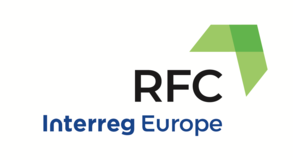

In this section of our website, the project partners show their progress in the research and development of the project.
 Terezín fortress city is located in the Ústí Region, CZ. Established in baroque style in 1780 by Emperor Joseph 2nd and named Terezín to stress the importance of the Habsburg Monarchy and his mother Maria –Theresa, the fortress itself and the surrounded city have been always settled by soldiers, the important break in the city development represents the leave of all armed forces in 1996. The huge fortifications, barracks and city houses became to be empty and derelict, the number of residents decreased of thousands, unique historical constructions became to decay.
Terezín fortress city is located in the Ústí Region, CZ. Established in baroque style in 1780 by Emperor Joseph 2nd and named Terezín to stress the importance of the Habsburg Monarchy and his mother Maria –Theresa, the fortress itself and the surrounded city have been always settled by soldiers, the important break in the city development represents the leave of all armed forces in 1996. The huge fortifications, barracks and city houses became to be empty and derelict, the number of residents decreased of thousands, unique historical constructions became to decay.
Ústí Region together with the City of Terezín cooperates on the revitalisation, maintenance and future development of this fortified site, parts of the fortifications were reconstructed and the programmes for the utilisation of these premises are realised and the further innovative plans are to be developed under the RFC project – supported by sharing the experience and know-how with EU partners.
 In Antwerp - Belgium a “six-star project" is being rolled out with three fortresses and three fortress cities. The project definition forms the start of the project with central knowledge exchange on three scale levels, from European to regional cooperation towards local actions where RFC will help to set the focus. For example, the cradle of the RFC project idea lies in Herentals where the city walls will connect many urban projects, ranging from cycling and walking paths to water buffering. In Mechelen and Dendermonde, the main focus will be on greening and accessibility of the city wall. Since the arrival of the Waterbus, Lillo fortress is the ideal test site for innovation where virtual reality will be developed. The fortress of Lier is a blind spot for the citizens, certain support and a vision or master plan is needed to protect the fortress. This also applies for the former walls of Zandvliet fortress, a forgotten pearl in the State-Spanish lines.
In Antwerp - Belgium a “six-star project" is being rolled out with three fortresses and three fortress cities. The project definition forms the start of the project with central knowledge exchange on three scale levels, from European to regional cooperation towards local actions where RFC will help to set the focus. For example, the cradle of the RFC project idea lies in Herentals where the city walls will connect many urban projects, ranging from cycling and walking paths to water buffering. In Mechelen and Dendermonde, the main focus will be on greening and accessibility of the city wall. Since the arrival of the Waterbus, Lillo fortress is the ideal test site for innovation where virtual reality will be developed. The fortress of Lier is a blind spot for the citizens, certain support and a vision or master plan is needed to protect the fortress. This also applies for the former walls of Zandvliet fortress, a forgotten pearl in the State-Spanish lines.
Results and future perspective - Stronger together (Brochure)
The European cooperation has delivered many local and regional improvements in the participating fortress cities (Antwerp, Lier, Mechelen, Herentals and Dendermonde). Several other Flemish cities joined the project and they will continue to collaborate in a structured way in the future.
Discover the project in this interactive brochure.
 Northern Transylvania, the Romanian host region of RFC project is famous worldwide for its dark stories, born from its rich ancient and medieval heritage. It is the host of more than 35 ancient fortresses and Roman forts, which are now included among other European heritage monuments in the revival focus of the RFC project.
Northern Transylvania, the Romanian host region of RFC project is famous worldwide for its dark stories, born from its rich ancient and medieval heritage. It is the host of more than 35 ancient fortresses and Roman forts, which are now included among other European heritage monuments in the revival focus of the RFC project.
North-West Regional Development Agency acts as a regional facilitator, bringing together local, regional, national and international stakeholders involved in the management, rehabilitation, development and capitalization of the heritage objectives. Through the transfer of experience, further heritage interventions will be proposed in the Regional Action Plan as an output of the RFC project.
 The fortified city of Magdeburg
The fortified city of Magdeburg
Magdeburg was enclosed by fortifications for more than 1,100 years. It was Prussia’s strongest and most secure fortress in the 19th century. From about 1500 onwards, the continuous expansion began, using medieval city walls to create a modern fortress. The last major expansion took place from 1866 with the strengthening of the core fortress and the construction of a new fortress belt. Inner and outer walls, moats, bastions, redoubts and forts were its key features. Remnants of these fortifications can still be seen and they have become a hallmark of the cityscape.
Some of the fortifications were renovated. For the development of other parts of the fortress, new ideas, good examples and new solutions still need to be found. An improvement of the funding possibilities is desirable.